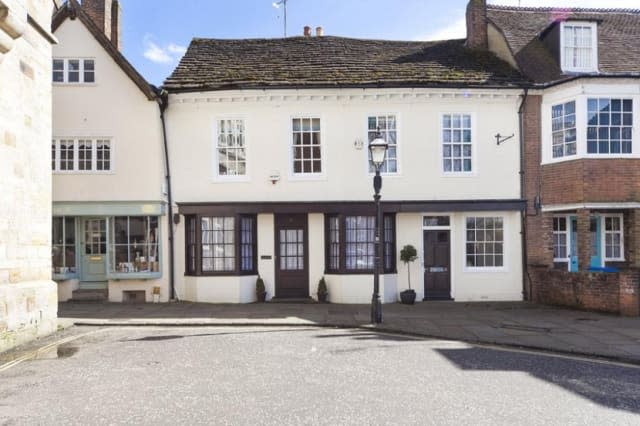Five houses hiding an incredible historic secret

They were the sixteenth-century equivalents of the safe room - a space where the owners could hide a visitor in the event of an attack.
The difference was that the attackers were government priest hunters. Threatened by Catholic plots, Elizabeth I took the extreme measure of criminalising Catholicism, making it an offence to harbour a priest.
See also: You'll never guess what's behind this hole in the wall
See also: A concrete high-rise with a difference
Many people, though, defied the law by creating priest holes in their homes - hiding places, often tiny, in which one or two men could hide, often for days at a time.
And these priest holes still exist, in the form of underground tunnels, spaces in the eaves or behind false walls.
We look at five houses with these Tudor safe rooms.
Lee-On-The-Solent, Hampshire

Looking like something out of Harry Potter, Le Breton farm is the oldest house in Lee on the Solent. The original building dates back to 1315, and was constructed for Gilbertus Le Bret Le Brutus as his temporary manor house. The priest hole was built by the Second Earl of Southampton; to get into it' you'll need to climb up inside the large and elaborate chimney stack in the centre of the house. The four-bedroom home is up for sale for £650,000 through agent Morris Dibben.
Horsham, West Sussex

This delightful three-bedroom cottage is on the historic Causeway, and has plenty of history of its own, with original beams, sash windows, a cellar and a lovely stone-walled garden. The priest hole is tucked away under the stone slates of the second floor. There are four reception rooms, including a book-lined sitting room; agents Knight Frank are looking for offers over £700,000.
Ewhurst, Surrey

The priest hole hidden in the drawing room of this seven-bedroom manor house is just one of many historic features, including exposed timbers, open fireplaces, vaulted ceilings and a cellar. These days, it's a rather safer place to live than when it was built in the sixteenth century, sitting in the middle of four acres and protected by a gated driveway. Agents Aspire Country Homes are looking for £2,750,000.
Newent, Gloucestershire

You'll need to hunt for the priest hole yourself at Conigree Court: nobody's sure quite where it is. The original seventeenth century cottage has long been swallowed up, with most of the property dating to 1897. And there are all sorts of other historic connections, though most are equally vague: Roman origins, an escape tunnel along with the priest hole, and a murder in 1645. The house comes with several other buildings; all in, the estate costs £2,250,000 from agent John Goodwin.
Appley Bridge, Wigan

The exterior of this semi-detached cottage gives little clue to the historic interior - and agents Arnold and Phillips say restoring it will be 'a real labour of love'. But as well as the priest hole in the attic, it has an escape tunnel, now sealed off, leading to the river nearby. Other features include beamed ceilings and traditional fireplaces; the owners are looking for offers over £250,000.




